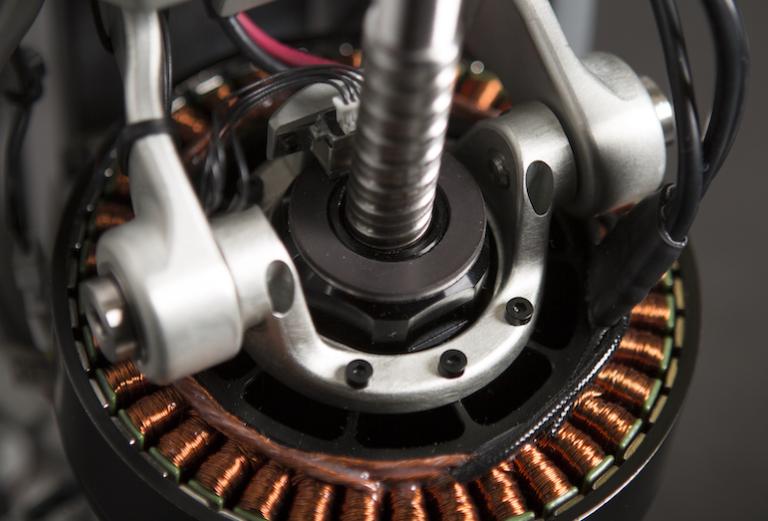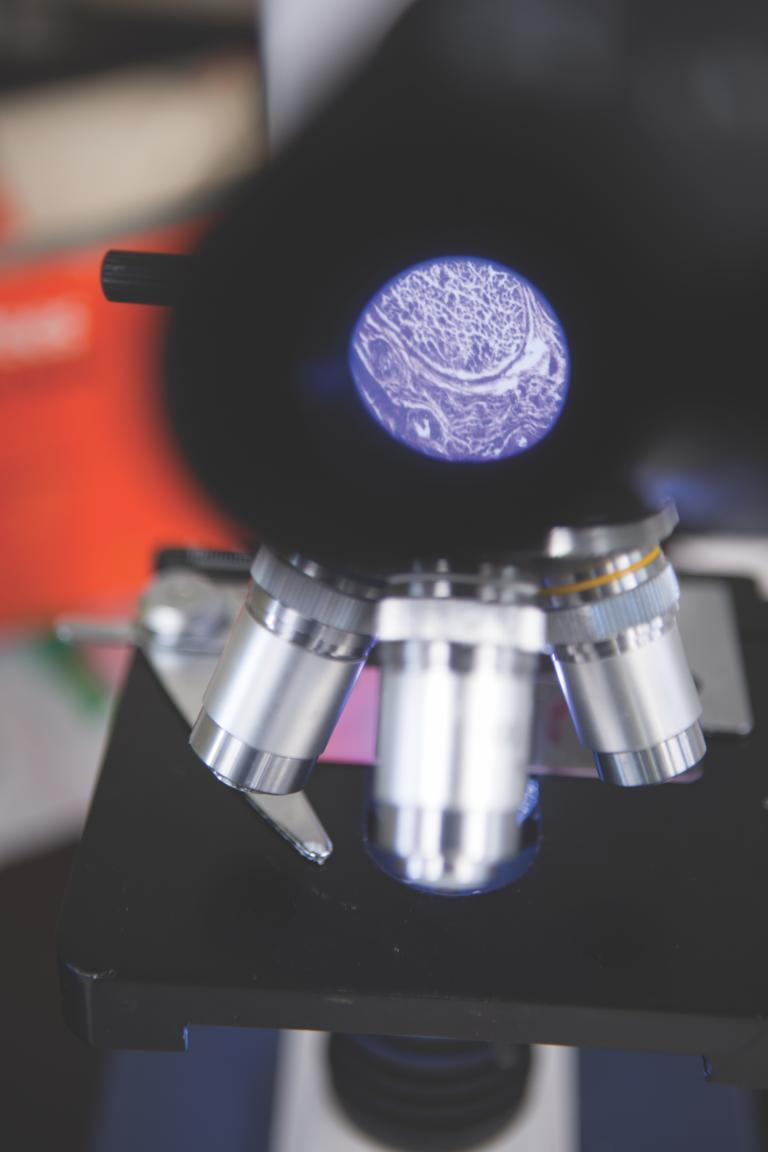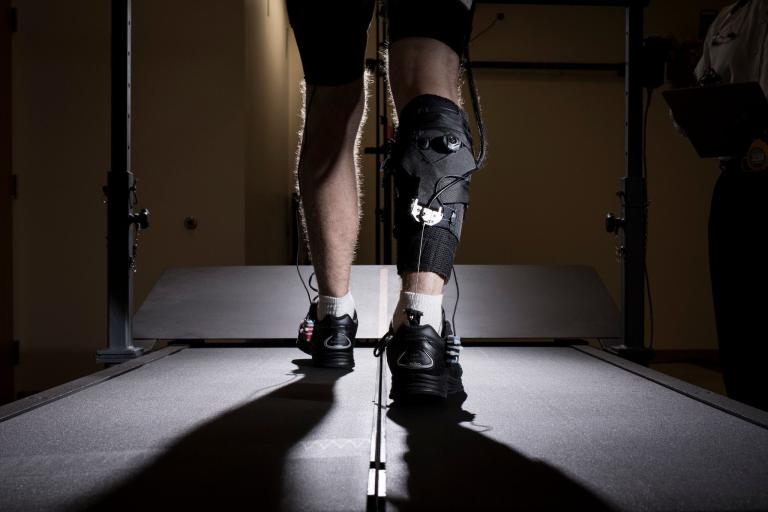Human Elements
Advances in prosthetics: a photo essay
- 2 minute read
- Images

“As we march into this century, we’re going to ask again and again what it means to be human. If you replaced all my limbs with synthetic bionics, am I still human? To me, the answer is absolutely ‘yes.’ Our design world can very much reflect who we are and what we hold dear. We should embed our values and our wishes and dreams into what we build.”—Hugh Herr, PhD ’98, HMS lecturer on physical medicine and rehabilitation at Spaulding Rehabilitation Hospital, and director, Biomechatronics group, MIT Media Lab
In a prosthesis being developed for above-knee amputees, a single actuator serves as both knee and ankle while a custom motor-and-spring design mimics biological muscles and tendons. The leg is designed to improve range of motion, dynamic performance, power, and energy efficiency over that delivered by existing lower-limb prostheses while weighing no more than an average adult leg.

Nerve fibers regrow in residual rat limbs following an experimental amputation technique that preserves more natural neuromuscular relationships than previously possible. HMS researchers are exploring embedded electrodes and optogenetic muscle stimulation to not only provide finer prosthesis control but also to deliver sensory feedback from the artificial limb.

Hard exoskeletons and soft exosuits can restore function for patients with limb weakness or paralysis resulting from injury or disease. They can also augment the performance of able-bodied individuals, such as soldiers who need to maintain their stamina while carrying heavy packs over long distances. Exosuits that deliver small forces to specific locations at key moments can help people with spinal-cord injury bend and extend their hands and help stroke survivors retrain muscles to correct for foot drop and other gait abnormalities.